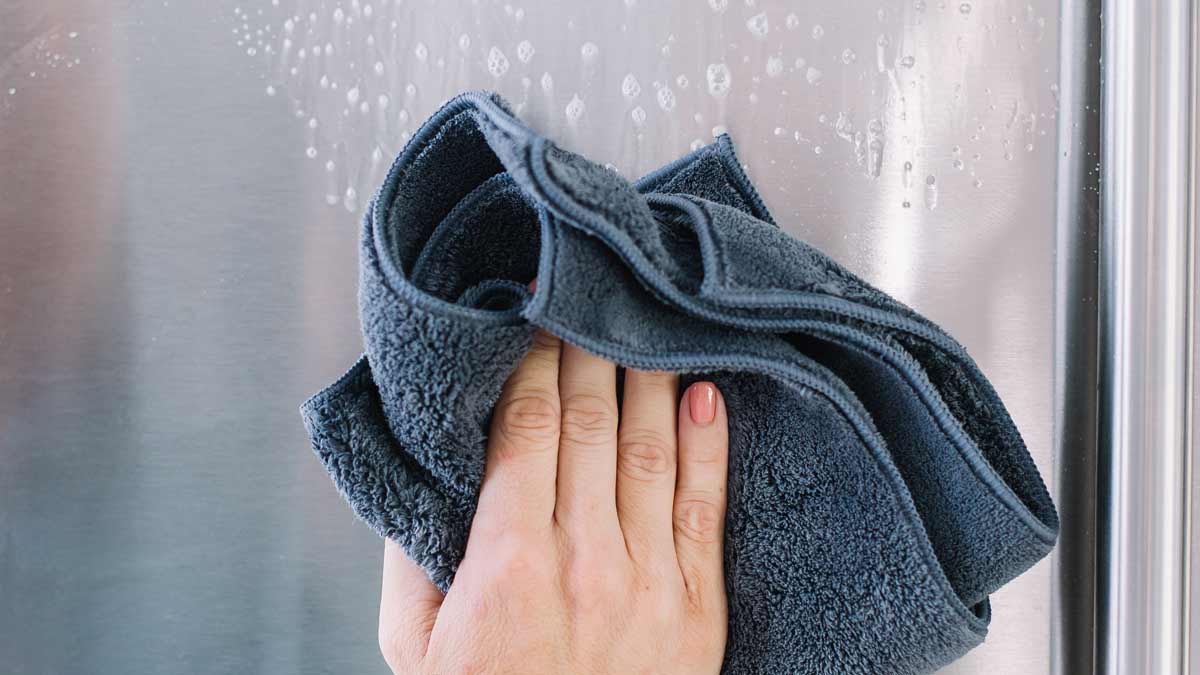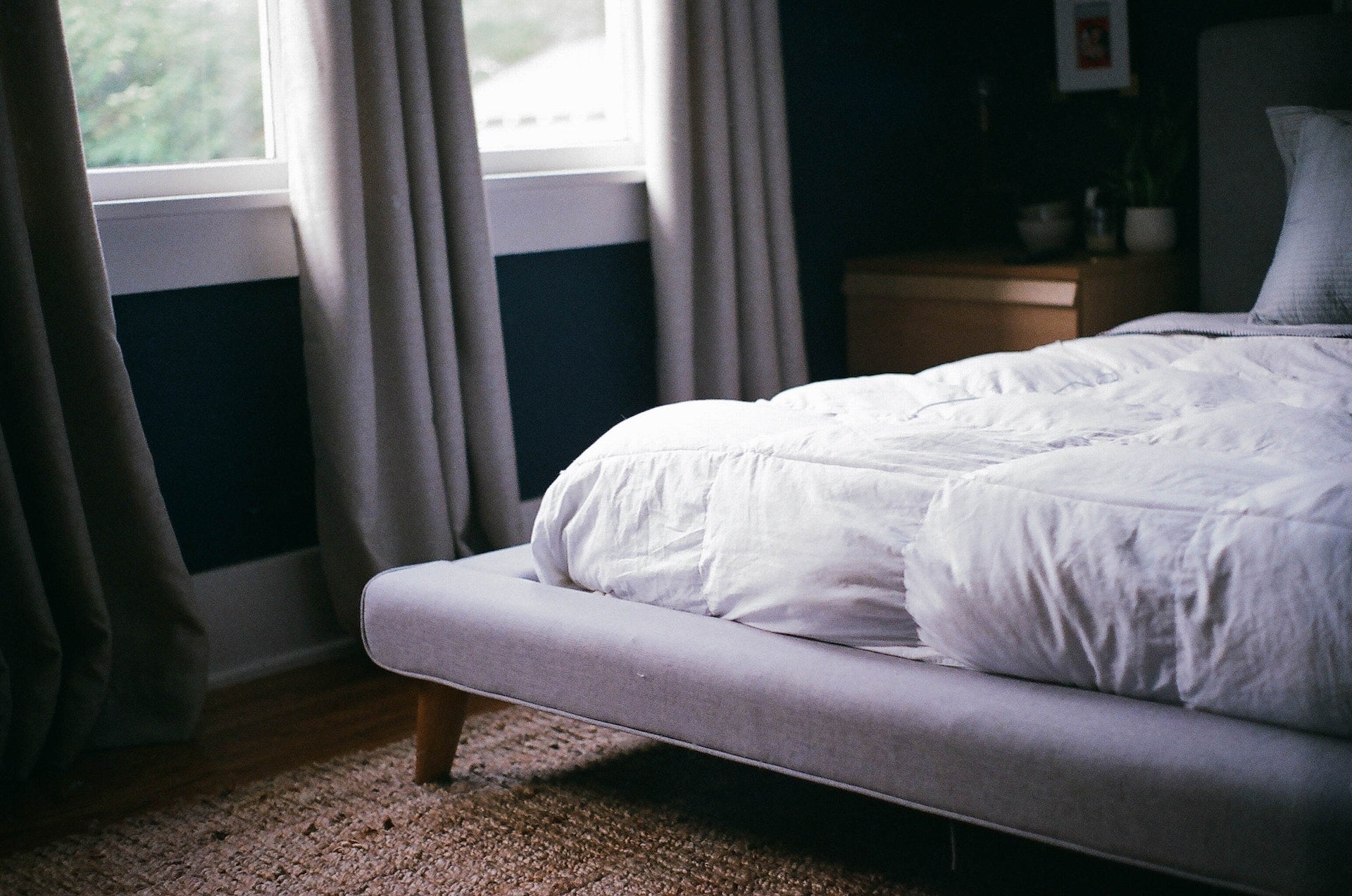
The Difference Between Cleaning, Disinfecting, and Sanitizing
There's no wrong time to clean your home, but to do it right, you need to know the difference between cleaning, disinfecting, and sanitizing. Our guide outlines these distinctions and shows you how to properly use an all purpose cleaner and disinfectant.
What’s the Difference Between Cleaning, Disinfecting, and Sanitizing?

- Cleaning is usually done with water and soap or detergent. The CDC defines cleaning as, “the removal of germs, dirt, and impurities from surfaces'', usually by using a cleaning product, water, and agitation with tools (like a brush or towel).
- Sanitizing reduces germs according to levels stipulated by public health codes, and it's usually done using diluted bleach or alcohol solutions or sanitizing solutions.
- Disinfecting kills most germs, viruses, and bacteria on surfaces, and is usually done with chemicals and stronger bleach surfaces.
Pro tip: You should always clean a surface before sanitizing or disinfecting.
How to Safely Clean, Sanitize, and Disinfect Different Household Surfaces

Every surface in your home needs regular cleaning to reduce bacteria and fomites, but the dirtiest spots in your house might surprise you. Discover how to keep them safely clean and sanitized.
Semi-Porous & Non-Porous Surfaces
Nonporous surfaces include varnished wood, glass, metal, and plastic. Semi-porous surfaces include certain wall paints, certain plastics, and waxed surfaces.
Cleaning
- Clear items from the area.
- Apply one spray of Puracy Everyday Surface Cleaner to each 2’x2’ square area.
- Wait 10-30 seconds.
- Wipe with a clean paper towel or a folded microfiber towel using a tight, overlapping z-pattern.
- Use tight, overlapping z-patterns to ensure total coverage and eliminate streaks.
- Keep folding your microfiber cloth to a clean side. Throw in the washing machine (and wash your hands!) as soon as it's fully saturated.
Pro Tip: Disposable paper towels aren't eco-friendly but they're great for reducing the spread of germs during flu season.
Disinfecting
- Use a surface cleaner on the material.
- Follow manufacturer instructions for your disinfecting product.
- Allow the mixture to sit on surfaces for the recommended period of time.
- Ensure proper ventilation at all times.
Pro tip: Be careful not to mix certain chemicals together, especially bleach and ammonia (which produces toxic gas). You can use EPA-endorsed wipes, sprays, and solutions (like Puracy's disinfecting cleaner) or a diluted bleach solution.
Sanitize
- Wear gloves and mask to protect yourself and heavier PPE if required.
- Isolate the area that needs to be sanitized to prevent cross contamination.
- Treat the affected area with disinfectant, taking extra care to follow the manufacturer's instructions, including dilution and cure times.
- Clean up the area and then discard the cleaning tools in a proper manner according to the type of spill cleaned.
Pro tip: Instead of bleach, opt for an EPA-registered disinfectant approved for hard surfaces.
Upholstered Surfaces
Upholstered surfaces refer to soft coverings of furniture, including foam, padding, webbing, and fabric.
Cleaning
- When cleaning soft surfaces like couches, carpets, curtains, and mattresses, start by vacuuming areas to lift as many stain-causing particles as possible.
- Target spots with our Natural Stain Remover which dissolves and removes thousands of splotches like grass, blood, wine, dirt, and pet accidents.
- Launder machine-washable items in the warmest water possible or use a carpet cleaner with a natural carpet and upholstery shampoo (then run a cycle with only water).
Pro tip: When cleaning soft surfaces during times of sickness:
- Wear disposable gloves and mask when handling clothing or bedding of anyone who is ill.
- Avoid shaking dirty linens to prevent dispersing germs into the air.
- Clothing and bedding should be machine-washed on the hottest setting possible.
- Clean/disinfect clothes hampers.
- Consider using a disposable or washable hamper liner.
- People who spend time in high-traffic areas (like hospitals and supermarkets) should remove their clothes and launder them as soon as arriving home.
Disinfect
- To disinfect soft surfaces and materials (like bedding, clothing, and carpets), the CDC recommends laundering or shampooing them using the hottest water possible.
- Assuming they’re safe for fabrics, you can also use products that meet the EPA’s criteria for killing SARS-CoV-2.
Sanitize
- Wear gloves and mask to protect yourself and heavier PPE if required.
- Isolate the area that needs to be sanitized to prevent cross contamination.
- Treat the affected area with an EPA-registered disinfectant, taking extra care to follow the manufacturer's instructions, including dilution and cure times.
- Clean up the area and then discard the cleaning tools in a proper manner according to the type of spill cleaned.
Frequently Asked Questions

Do All Purpose Cleaners Disinfect?
In addition to clearing goop, gunk, and grime, Puracy Natural Multi-Surface Cleaner uses C10-C16 alcohol ethoxylate as an effective alternative to ammonia and petroleum distillates.
While cleaning products don't kill every germ, this is the first step in breaking down – and removing – a number of harmful pathogens that lurk in sticky, wet, and smelly spots. This also improves the effectiveness of your disinfectant.
How Long Should Disinfectant Sit on a Surface?
To disinfect hard surfaces, always follow the exact directions on product labels. If you don’t let your disinfectant sit long enough, it simply can’t do its job.
For example, our hydrogen peroxide disinfectant kills more than 99.9% of bacteria in 1 minute and 99.9% of viruses within 10 minutes of soaking time.
Which Home Surfaces Need to Be Disinfected Most?
After spot-treating and cleaning surfaces, it’s time to kill remaining microbes. Anything that comes in contact with your hands, food, and the outside world should be regularly disinfected, especially high-traffic areas like:
- Electronics
- Children’s furniture and toys
- Kitchen cutting boards & utensils (dishwashers destroy germs better than hand washing)
- Countertops and cupboard doors
- Doors, handles, and packages coming into the home
- Light switches
- Faucets
- Clothing, shoes, backpacks, and handbags
- Countertops (especially after putting grocery bags or packages on them)
Note: Before using any home disinfectant, check the manufacturer’s instructions to ensure it's safe for certain materials.
When Should I Use a Cleaner Instead of a Disinfectant?
Unlike all-purpose cleaners, disinfectants and sanitizing products use “antimicrobial pesticides” to kill germs. They're regulated by the EPA and pesticide regulation departments in various states. However:
There is, however, a small difference between the two:
- Sanitizing products kill up to 99.9% of bacteria, reducing them to a safe level that’s in accordance with EPA standards for efficacy.
- Disinfecting uses various chemicals (including EPA-registered disinfectants) to kill almost 100% of bacteria and viruses on surfaces.
Benefits of Cleaning, Disnifecting, and Sanitizing

Learn why these three forms of cleaning keep your household safe and healthy all year round.
Minimizing Allergens
Regular cleaning and disinfecting minimize the presence of common allergens in your home. If you have asthma or pollen allergies, your day-to-day life can be greatly improved simply by regular dusting and vacuuming as a base level of cleanliness.
Preventing Viruses
During cold and flu season, we are more susceptible to the common cold, chicken pox, and even COVID. Regular cleaning and disinfecting can keep your family safer and healthier, especially when focusing on high touch areas and common gathering spaces.
Limiting Bacteria
Cleaning alone can fight the spread of common bacteria, and sanitizing and disinfecting further reduces the remaining germs. Common bacteria commonly found in households include:
- Staphylococcus
- Micrococcus
- Pseudomonas
- Bacillus
- E. coli
- Salmonella
Mold and Mildew Prevention
Common fungi, like mold and mildew, can proliferate if moisture or damp areas are not immediately cleaned or disinfected. When dealing with these, always ensure proper ventilation when cleaning as well.
How Puracy Disinfecting Surface Cleaner Works

Some products double as both cleaners and disinfectants – but most aren’t effective at removing dirt and residue. Our CDC-approved, EPA-listed Disinfecting Surface Cleaner kills more than 99.9% of germs and viruses within 10 minutes. It also tackles grimy, sticky, and food-safe surfaces without caustic ingredients like chlorine, ammonia, and bleach.
In other words, this 2-in-1 cleaner and disinfectant gets the entire job done. And because it's hydrogen peroxide-based, it's totally biodegradable!
How to Use the Puracy Disinfectant Spray
Thoroughly spray onto the surface. Let stand for 10 minutes and wipe away with a clean, dry microfiber towel.
Note: While this product is designed for almost every non-porous surface, we don't recommend it for semi-porous surfaces like wood, soapstone, and marble.


























